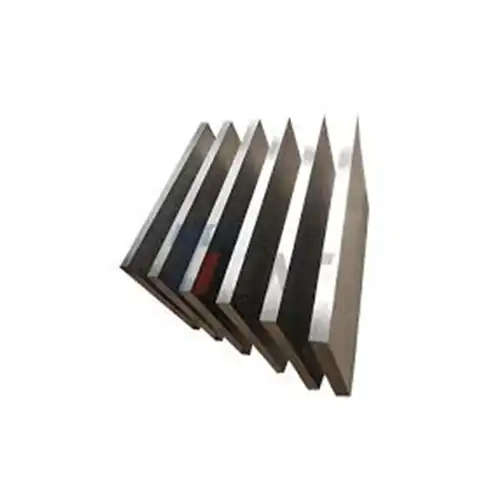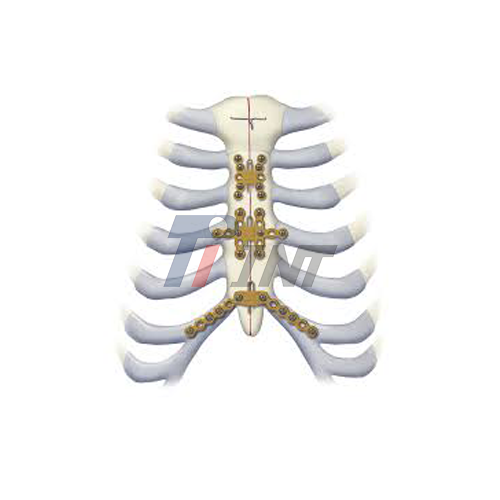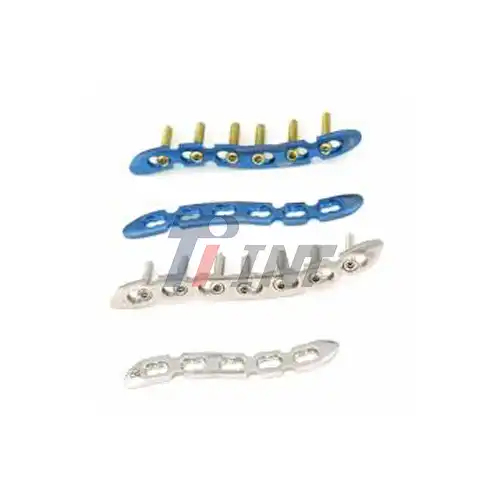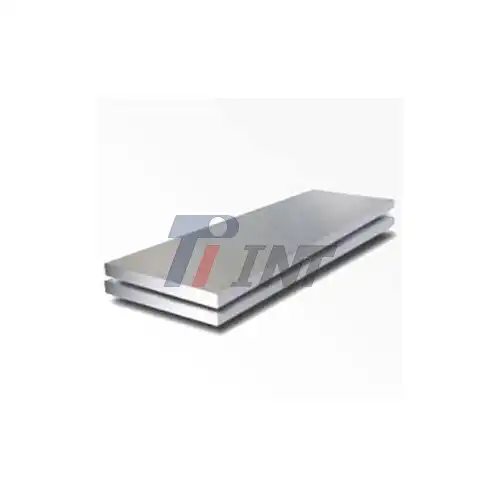How Does a Titanium Plate Help in Chest Surgery?
 2025-11-05 15:01:35
2025-11-05 15:01:35
Chest surgery is a complex medical procedure that often requires innovative solutions to ensure the best possible outcomes for patients. One such solution that has revolutionized the field is the use of titanium plates. These remarkable devices have become indispensable in various chest surgeries, offering stability, strength, and biocompatibility. In this comprehensive article, we'll explore the fascinating world of titanium plate in chest surgery, their benefits, applications, and the cutting-edge technology behind their production.
|
|
|
The Role of Titanium Plates in Chest Surgery
Titanium plates play a crucial role in chest surgery, particularly in procedures involving the ribcage, sternum, and other bony structures of the thoracic cavity. These plates serve multiple purposes, including:
- Stabilization of fractured bones
- Reconstruction of chest wall defects
- Support for weakened or damaged structures
- Facilitation of proper healing and alignment
The use of titanium plates in chest surgery has significantly improved patient outcomes, reducing recovery times and enhancing the overall success rates of these complex procedures. The unique properties of titanium make it an ideal material for medical implants, especially in the challenging environment of the chest cavity.
Titanium's exceptional strength-to-weight ratio allows for the creation of robust yet lightweight plates that can withstand the constant movement and pressure exerted by breathing and other physiological processes. This characteristic is particularly beneficial in chest surgeries, where the implant must endure continuous stress without compromising its integrity or function.
Applications of Titanium Plates in Various Chest Surgeries
Titanium plates find applications in a wide range of chest surgeries, each with its unique requirements and challenges. Some of the most common procedures involving titanium plates include:
Rib Fracture Repair
Rib fractures can be extremely painful and potentially life-threatening, especially when multiple ribs are involved. Titanium plate in chest offer a robust solution for stabilizing fractured ribs, allowing for proper alignment and accelerated healing. The plates are carefully contoured to match the natural curvature of the ribs, ensuring a perfect fit and optimal functionality.
In cases of flail chest, where a section of the rib cage becomes detached from the rest of the chest wall, titanium plates play a vital role in restoring chest wall integrity. By securing the fractured ribs in their correct positions, these plates help prevent paradoxical breathing and improve respiratory function, significantly reducing the risk of complications and shortening recovery times.
Sternal Reconstruction
The sternum, or breastbone, is a crucial component of the chest wall, providing protection for vital organs and serving as an attachment point for several muscles. In cases where the sternum needs to be reconstructed, such as after cardiac surgery or trauma, titanium plate in chest offers an excellent solution.
Titanium plates used in sternal reconstruction are designed to provide rigid fixation while allowing for natural chest movement during respiration. These plates are often used in conjunction with titanium screws to create a stable construct that promotes proper healing and reduces the risk of sternal dehiscence, a serious complication where the sternum separates after surgery.
Chest Wall Defect Repair
Chest wall defects can result from various causes, including congenital abnormalities, trauma, or tumor resection. Repairing these defects often requires a combination of soft tissue reconstruction and skeletal stabilization. Titanium plates play a crucial role in the latter, providing a strong and durable framework for the reconstructed chest wall.
In these procedures, surgeons may use custom-designed titanium plates that are tailored to the specific anatomy of the patient. These bespoke implants ensure optimal fit and function, leading to better cosmetic outcomes and improved quality of life for patients with complex chest wall defects.
The Technology Behind Titanium Plates for Chest Surgery
The production of titanium plates for chest surgery involves advanced manufacturing techniques and stringent quality control measures. Companies like Baoji INT Medical Titanium Co., Ltd. have been at the forefront of this technology, leveraging their expertise in titanium processing to create high-quality medical implants.
Material Selection and Processing
The journey of a titanium plate in chest begins with the careful selection of raw materials. Medical-grade titanium, typically Ti6Al4V ELI (Extra Low Interstitial), is chosen for its superior properties and biocompatibility. This alloy offers an optimal balance of strength, durability, and corrosion resistance, making it ideal for long-term implantation in the human body.
The titanium undergoes a series of processing steps, including melting, forging, and heat treatment, to achieve the desired mechanical properties. Advanced techniques such as vacuum arc remelting (VAR) may be employed to ensure the highest level of purity and consistency in the material.
Precision Manufacturing
Once the raw material is prepared, the titanium plates are manufactured using state-of-the-art CNC machining and forming techniques. These processes allow for the creation of plates with complex geometries and precise dimensions, tailored to the specific requirements of different chest surgeries.
The manufacturing process often involves:
- Computer-aided design (CAD) for creating detailed 3D models of the plates
- CNC milling and turning to shape the titanium into the desired form
- Precision bending and contouring to match the natural curvature of the chest wall
- Surface finishing techniques to ensure smoothness and biocompatibility
Quality Control and Certification
The production of titanium plates for chest surgery is subject to rigorous quality control measures to ensure the safety and efficacy of the implants. Companies like INT Medical Titanium adhere to international standards such as ISO 13485:2016 for medical device quality management systems and obtain certifications like the EU CE mark to demonstrate compliance with regulatory requirements.
Each titanium plate undergoes thorough inspection and testing, including:
- Dimensional verification to ensure accurate sizing and fit
- Material composition analysis to confirm adherence to specifications
- Mechanical testing to validate strength and durability
- Surface finish inspection to ensure biocompatibility
- Sterilization validation to guarantee product safety
Conclusion
Titanium plate in chest has revolutionized chest surgery, offering unparalleled benefits in terms of stability, biocompatibility, and patient outcomes. From rib fracture repair to complex chest wall reconstructions, these remarkable implants continue to push the boundaries of what's possible in thoracic surgery.
For those interested in learning more about cutting-edge titanium implants for chest surgery and other medical applications, Baoji INT Medical Titanium Co., Ltd. stands ready to provide expert guidance and high-quality products. With their commitment to innovation and quality, INT continues to play a crucial role in advancing the field of medical titanium implants. To explore their range of titanium products or discuss custom solutions for your specific needs, don't hesitate to reach out to their team of experts at export@tiint.com.
References
1. Bottlang, M., Long, W. B., Phelan, D., Fielder, D., & Madey, S. M. (2013). Surgical stabilization of flail chest injuries with MatrixRIB implants: a prospective observational study. Injury, 44(2), 232-238.
2. Granetzny, A., Abd El-Aal, M., Emam, E., Shalaby, A., & Boseila, A. (2005). Surgical versus conservative treatment of flail chest. Evaluation of the pulmonary status. Interactive cardiovascular and thoracic surgery, 4(6), 583-587.
3. Ng, C. S. H., Ho, A. M. H., Lau, R. W. H., & Wong, R. H. L. (2014). Chest wall reconstruction with MatrixRIB system: avoiding pitfalls. Interactive cardiovascular and thoracic surgery, 18(3), 402-403.
4. Raman, J., Straus, D., & Song, D. H. (2007). Rigid plate fixation of the sternum. The Annals of thoracic surgery, 84(3), 1056-1058.
5. Vos, R. J., Jongbloed, L., Sonker, U., & Kloppenburg, G. T. (2017). Titanium plate fixation versus conventional closure for sternal dehiscence after cardiac surgery. Journal of cardiothoracic surgery, 12(1), 1-7.












_1753425743099.webp)
_1752819172472.webp)





